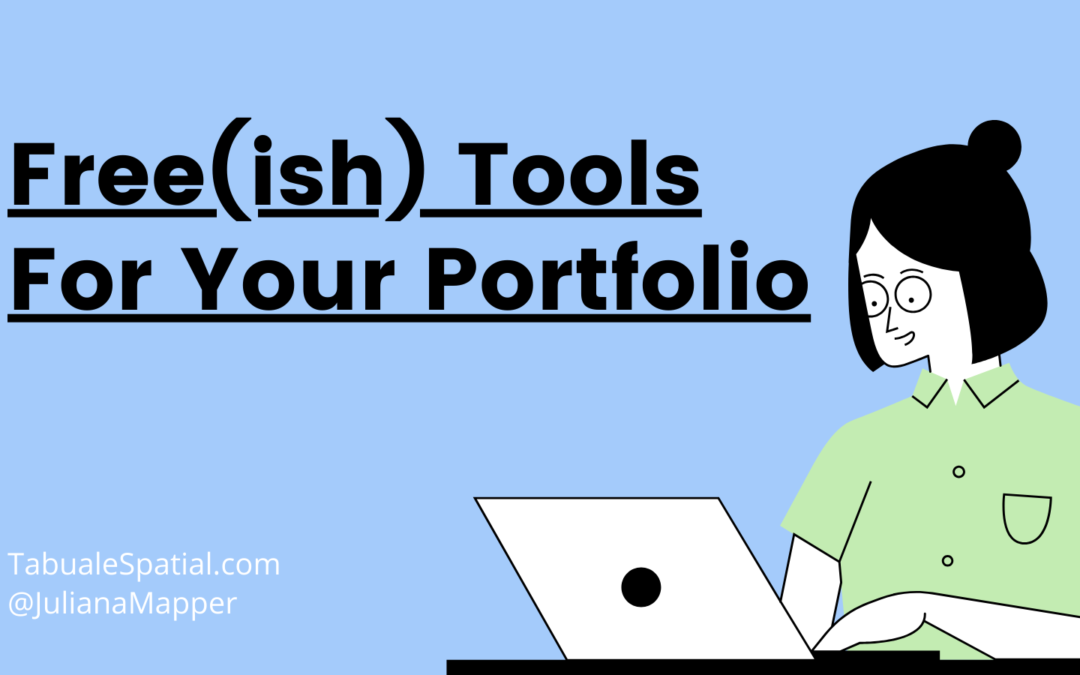Developing a GIS portfolio is an important way for you to be able to express the value that you add to the workplace. I found a GIS portfolio to be a useful way for me in terms of searching for jobs both externally and internally. I have been able to express the value that I add it became really useful as I tried to network, to join other teams and projects be able to show the breadth of analysis that I had done, as well as my skill set.
The work that you do as a GIS or Data Analyst is by its nature visual. Being able to show and communicate that visual nature is a large part of what we do.
I am a big fan of using the tools that you have access to now and expect to have access to in the future. I have seen so many people spend time designing a beautiful GIS portfolio in an Adobe product while they had access to the products while in school, only to have to pay $50 to be able to gain access to the software to update their data portfolio for an interview. The same is true for things like ArcGIS Online Story Maps. I’ve seen students spend hours and hours perfecting a Story Map only to lose access to it when they graduate.
Here are a few tools that I love and may help you as you create a portfolio.
Google sites (www.sites.google.com)
Google Sites is a great tool to get you going; unlike other web services where you have to pay a fee to get started, you can create a GIS portfolio for free on Google sites. This is a great option if you are on a tight budget or want to start around playing I do recommend that you make the small investment into a personalized domain before you send your portfolio out. One thing I love about google slides is that they already have a template for a portfolio page. This is a great way to get started!
Powerpoint/ Google Slides:
Powerpoint and Google Slides are excellent options. In large part became you can easily design your GIS portfolio to be digital and have a printed copy as well. I have benefited from saying “you can turn to page 12” when referencing items during an interview— even virtually. When I have interviewed in person I provided a bound copy of my portfolio to the interviewers.
I love a good template as it makes the graphic design a bit easier to started and here are a few places that I like:
- SlidesGo (https://slidesgo.com/). They offer a ton of great FREE templates. Per the license, you do have to include references to slidesgo in your presentation if you use the slides. But for $5 you can pay for one month of premium slidesgo and then you can remove the requirement to cite them. You can see the FAQs where it says “This license allows you to use Slidesgo’s templates without having to credit us, and will remain in effect even after your Premium subscription expires.” Search for “portfolio” or “maps” to get started.
- Slides Gala (https://slidesgala.com/#latest). If you have ever attended a mappy hour you may recognize that the slide deck we use comes from SlidesGala. This is another great source of templates.
Canva (www.canva.com)
You may be familiar with Canva as a tool for social media posts. But did you know that Canva has presentations? Canva has some great templates for portfolios. Go to Business > Presentations to see them. You may have to pay a few bucks for design elements, but you can also probably replace them with other free elements.
ArcGIS Story Map (www.storymap.arcgis.com)
You can create a wonderful GIS portfolio using the ArcGIS Online StoryMap platform. If you go this route, I would recommend that you create a FREE ArcGIS Online account that is not tied to your school or workplace so that you ensure that you have access to it moving forward and it is something that you completely own.
Are there other tools that you love for creating your GIS Portfolio? Let me know!
Every year I run a GIS Portfolio Challenge and it is such a great way to work on your GIS Portfolio. Make sure you’re signed up for our mailing list to get notified of when I open up my Portfolio Challenge again later this year!
